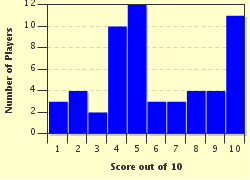Quiz Answer Key and Fun Facts
1. We begin at the very beginning, and the winner of the first Nobel Prize for Literature, awarded in 1901. The winner was a poet I doubt many of you will have read, Sully Prudhomme. Where was he born?
2. From a winner who few (if any) of you have read, to one who just about everyone surely has. Rudyard Kipling won in 1907, becoming the first Briton to do so, but where was he born?
3. The recipient of the 1923 Nobel literature prize, poet W.B. Yeats, added a thirteenth country to the list of winners. Where was he born?
4. Known for his ironic, epic novels and novellas, Thomas Mann was a social critic and philanthropist who won the Nobel Prize in 1929. Where was he born?
5. Remarkably, it was not until 1930 that novelist, short-story writer and playwright Sinclair Lewis became the first American winner of the Nobel literary prize. Where was he born?
6. A poet, diplomat, educator and humanist, she wrote under the pseudonym of Gabriela Mistral. In 1945 she became the fortieth recipient of the Nobel Prize for Literature and the first Latin American winner. Where was she from?
7. Hermann Hesse is widely regarded as one of the most important German-language authors of the 20th century. Another anti-Nazi, he won the Nobel Prize in 1946, when his writing career was already over. Where was he born?
8. An essayist, publisher, playwright, literary and social critic, T.S. Eliot is widely regarded as one of the foremost poets of the 20th century. Where was he born?
9. Many of you may not have read anything by the 1955 winner of the Nobel Prize, but Halldór Laxness was a genuine all-rounder: primarily a poet and novelist, he also wrote newspaper articles, travelogues, plays and short stories. He was also the only 20th-century Nobel laureate from his country. Where was he born?
10. A graduate in law from the famous Sorbonne at the University of Paris, he became a career diplomat and was once Ambassador to the UK. Poet George Seferis won the Nobel Prize for Literature in 1963, but where was he born?
Source: Author
EnglishJedi
This quiz was reviewed by FunTrivia editor
bloomsby before going online.
Any errors found in FunTrivia content are routinely corrected through our feedback system.


